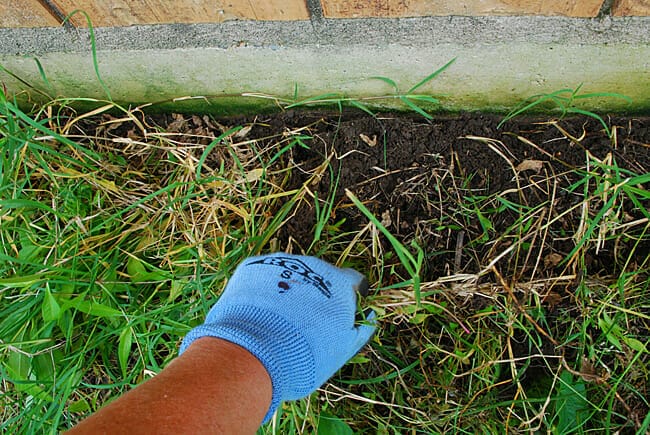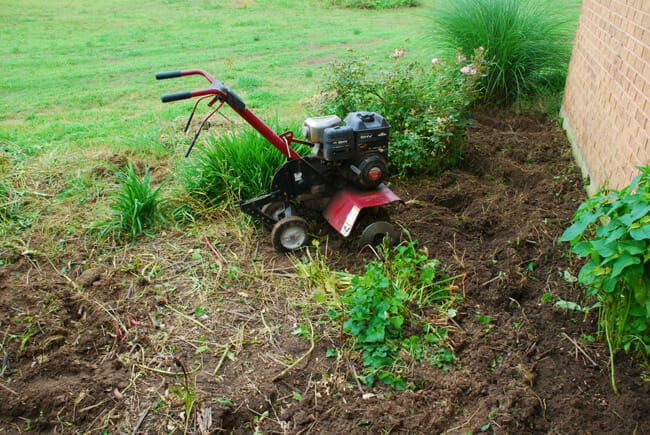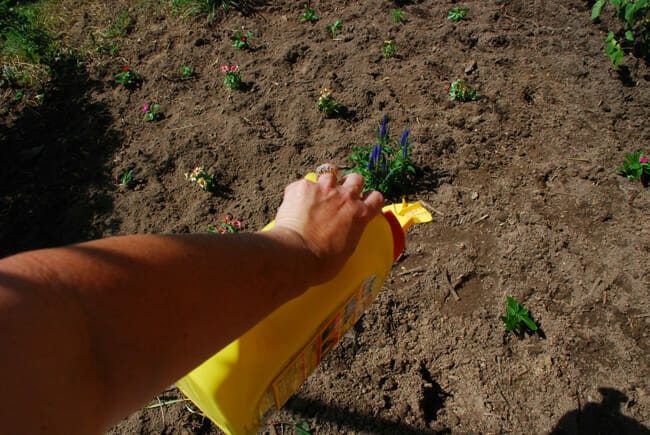This flowerbed brings to mind Audrey II, the plant with the voracious appetite from “Little Shop of Horrors.” Several years ago I made the mistake of planting wisteria, an invasive plant that, according to one forester friend “can move a house off its foundation.” His words struck home, no pun intended, and I began trying to eradicate the plant-turned-pest from my landscape. The forester was right: wisteria roots as big as my forearm had wrapped a quarter of the way around my house under the soil. As the plants keep coming from seed, this will be an on-going battle.

To start my flowerbed renovation, I took a pint of soil in to my local County Extension Office for analysis. The University of Arkansas Extension provides this free service to state residents. All you have to do is rake aside any surface debris, dig up small samples in several areas in the flowerbed or lawn from four inches deep, and mix these together to get a representative sample. Take the samples to your County Extension office and they will collect the needed information and mail in the sample for testing. Once you receive your recommendations, either via email or mail, you can amend the soil as suggested, making you look like a green-thumb superstar. In my case, no special soil amendments were needed, so I’ve got that going for me.
Overgrown Plant Removal
Now comes the hard part. I’m doing this on the cheap, and I’m an empty nester, so I had to do the unwanted plant removal myself. As an aside, gardening is a great alternative to video games – get your kids involved. Since my kids have flown the coop, I’m hoping the sweat-equity I’m investing in this project jump-starts my fitness quest.

After about fifteen minutes of this nonsense, I broke out my garden tiller. Some landscaping purists are going to frown on the use of mechanical tillage tools, but who are we kidding? Life is too short and there isn’t enough ibuprofen in the world to justify the amount of hoeing and weed-pulling this project required.

Choosing Plants
Once your space is tilled, and the unwanted plants, weeds and debris are removed, it’s time to select plants for your location. I’ve made most of the landscaping mistakes known to man, so here are some things I’ve learned the hard way about selecting plants:
- Less is more, so allow space for your annuals to spread out during the season. Sure you’re not going to have that well-established looking bed at first, but it will be just right toward the end of the season. On the other hand, if money isn’t an issue, planting close will help shade out weeds more quickly, so do what makes you happy.
- Pick the appropriate plants for the site. My bed is on the west side of the house, so I chose sun-loving plants. Consider your sun, moisture, structures, shade and water availability when choosing plants.
- Get help! There are free plans online but they’re not all ideal for our planting zone. Talk to your County Extension agent and get help choosing the plants that fit your space, and the amount of time and work you’re willing to invest in keeping things looking nice.
- Avoid plants that run amok. Invasive plants can get away from you, and that’s not a laughing matter.
- Throw out the rules and plant what you love.

Steps for easy maintenance
I’m a fan of appropriately using pesticides, but some people aren’t and that’s okay. If you are in the latter group, skip this part. Appropriate use of pesticides starts with reading and following the label, the WHOLE label. I used a pre-emergent herbicide to reduce the amount of time that I will spend weeding my flowerbeds. Landscape fabric or other physical weed barriers are good ideas as well.
Finally, I recommend using mulch. Being the tightwad that I am, I raked up the pine straw in my front yard and layered it 4 inches thick. This will prevent extreme fluctuations in soil temperature, improve moisture consistency, and inhibit some (not all) weeds from germinating. Plus it looks nice, and that’s what this flowerbed renovation is all about.

The Finished Project
Here’s the down and dirty on my flowerbed renovation.
This project took about 4 hours and cost about $25.00.
The plants (how many) purchased:
- Vinca (9)
- Salvia (1)
- Zinnia Zahara (3)

